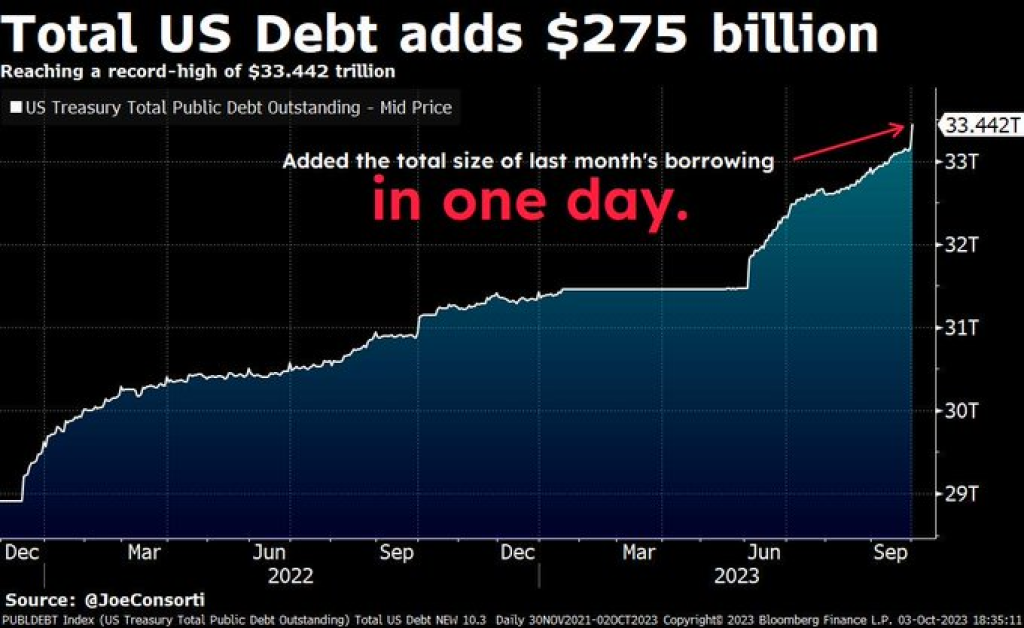
A recent tweet emphasizing ballooning US debt compared to Bitcoin’s market capitalization has reignited debate on the cryptocurrency’s merits as an inflation hedge. Prominent Bitcoin advocate Samson Mow highlighted that American debt expanded in one day by over half of Bitcoin’s entire market cap.

Mow cited data showing the US added debt equating to approximately 10 million BTC on a single day recently. Meanwhile, he noted some investors still question whether Bitcoin’s price near $27,000 makes for a good entry point.
The staggering debt levels juxtaposed with Bitcoin’s tightly controlled supply seemed to imply that the cryptocurrency looks undervalued by comparison. Mow’s perspective aligns with the view of Bitcoin as “digital gold,” protecting value as fiat money inflates.
However, skeptics argue that comparing America’s ability to service debt obligations with Bitcoin’s speculative valuation remains an oversimplification. The complexities and risks underlying both make the parallel dubious for some.
Bitcoin’s extreme volatility since inception also undermines its reliability as a stable store of value thus far. Detractors consider its flawed valuation models and lack of clear cash flows as failing key value benchmarks.
Of course, proponents believe Bitcoin’s transparent, capped supply and decentralization offer superior inflation resistance compared to dollars or gold in the long term. But skeptics question whether it has sufficiently proven durability to warrant premium valuations.
The tweet ultimately aimed to underscore Bitcoin’s scarcity against boundless fiat expansion in hopes of persuading hesitant adopters. But the divisive topic demonstrates the cryptocurrency’s polarizing nature even after over a decade.
We recommend eToro
Wide range of assets: cryptocurrencies alongside other investment products such as stocks and ETFs.
Copy trading: allows users to copy the trades of leading traders, for free.
User-friendly: eToro’s web-based platform and mobile app are user-friendly and easy to navigate.








